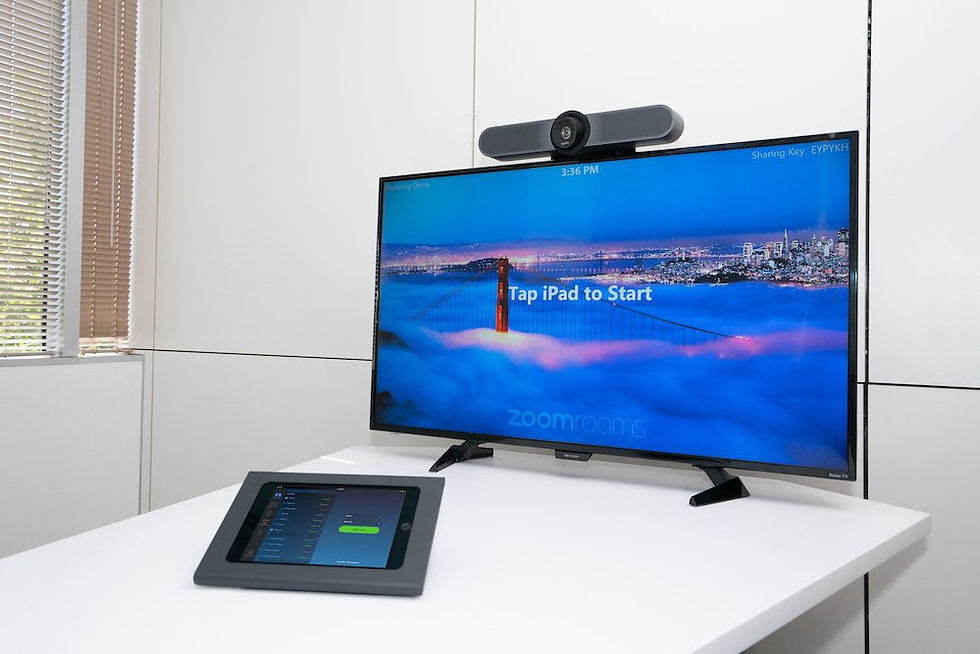Videoconferencing with ZOOM and Screen Sharing with KLIK – A Perfect Combination for Productivity.
- KLIK Team
- Jun 16, 2019
- 3 min read
Updated: Jun 17, 2019

For many, ZOOM has become an indispensable part of their collaboration workflow. And rightly so, with the convenience of both scheduled and impromptu meetings, personal meeting IDs and calendar integration, ZOOM has become one of the most demanded productivity tools in business both large and small. With the ever-growing footprint of ZOOM and similar offerings (Cisco Webex, GoToMeeting, ON24, etc.), we’re often asked how KLIK integrates with these solutions. Here are some of the ways we answer that question.
First, it’s important to distinguish between ZOOM’s screen sharing function and KLIK’s role as a screen sharing hardware platform. With ZOOM, individual participants are sharing content with one another, and the team, through their individual devices’ screens. This is great when you’re an active participant in the session, using your own device to view the meeting, but not so great when you’re attending a meeting and crowded around someone else’s laptop screen.
KLIK on the other hand, isn’t about screen sharing over the Internet to individual participants’ devices. KLIK is about screen sharing from any device to a large screen, allowing all meeting participants to focus on the meeting in that room. KLIK doesn’t replace ZOOM, it complements it, by allowing any active meeting participant to share their screen with the rest of the room, on the big screen.

For those familiar with the ZOOM platform, you’ll know that the company offers a downloadable software solution to extend videoconferencing and screen sharing capability to a screen that’s not attached to a user’s device. The ZOOM Room offering however does require a dedicated computer, to be connected permanently to the display screen. While the cost of the computer alone can vary from $500 to $1,500 or more, the ZOOM Room subscription adds another $499 per year to the cost. This may still be a good investment if room videoconferencing is the main goal, but it will also require additional components like a camera, speakers, a control interface, and setup.

The advantage of adding KLIK to a display, even when you’re a dedicated ZOOM house, is that you’ve now expanded your options for better collaboration, all while saving money. KLIK is a much more efficient means for local screen sharing when presenting a PowerPoint or Keynote to your team. The bonus is, you can still share the presentation with remote team members logged into ZOOM, while putting the whole thing on the big screen, without the need for a ZOOM Room setup.
Another important advantage of ZOOM/KLIK Integration is the ability to manage multiple presenters with the KLIK Moderator Mode function. In moderator mode, one person takes on the role of moderator, controlling who can stream to the big screen. Users can still be running ZOOM on their personal devices, while the moderator selects which user’s screen will be shared. The moderator can even preview the user’s screen before sending the contents to the big screen.
While ZOOM and other cloud-based videoconferencing and screen sharing services have been heralded a revolution in how people interact and collaborate, KLIK has focused on giving users wireless access to screens. Whether you have a paid or free ZOOM account, you can get a lot more mileage out of it by adding a KLIK wireless screen sharing device to every screen in your facility, starting at just $149.
Find out more about KLIK screen sharing products at www.klikboks.com



Comments